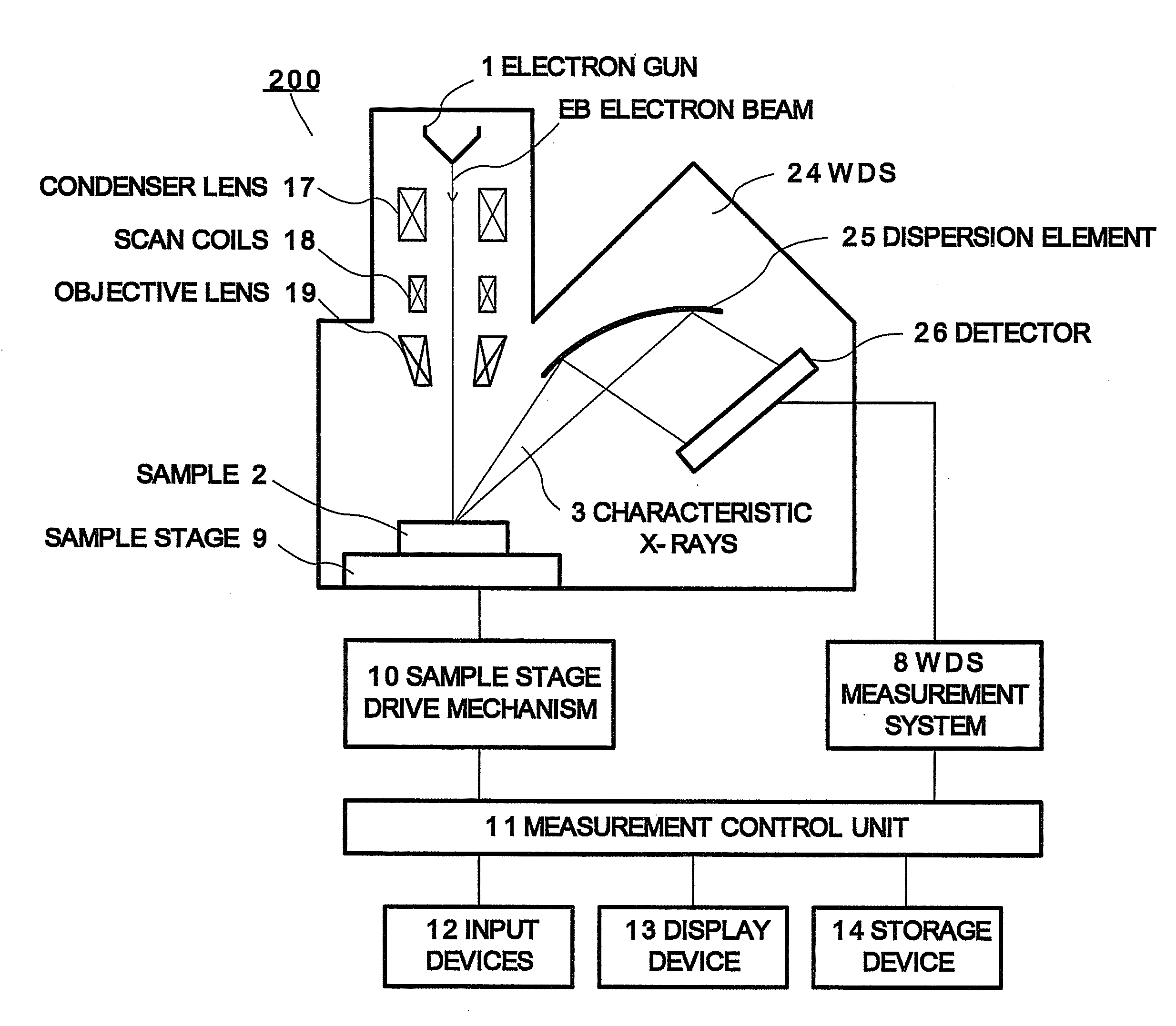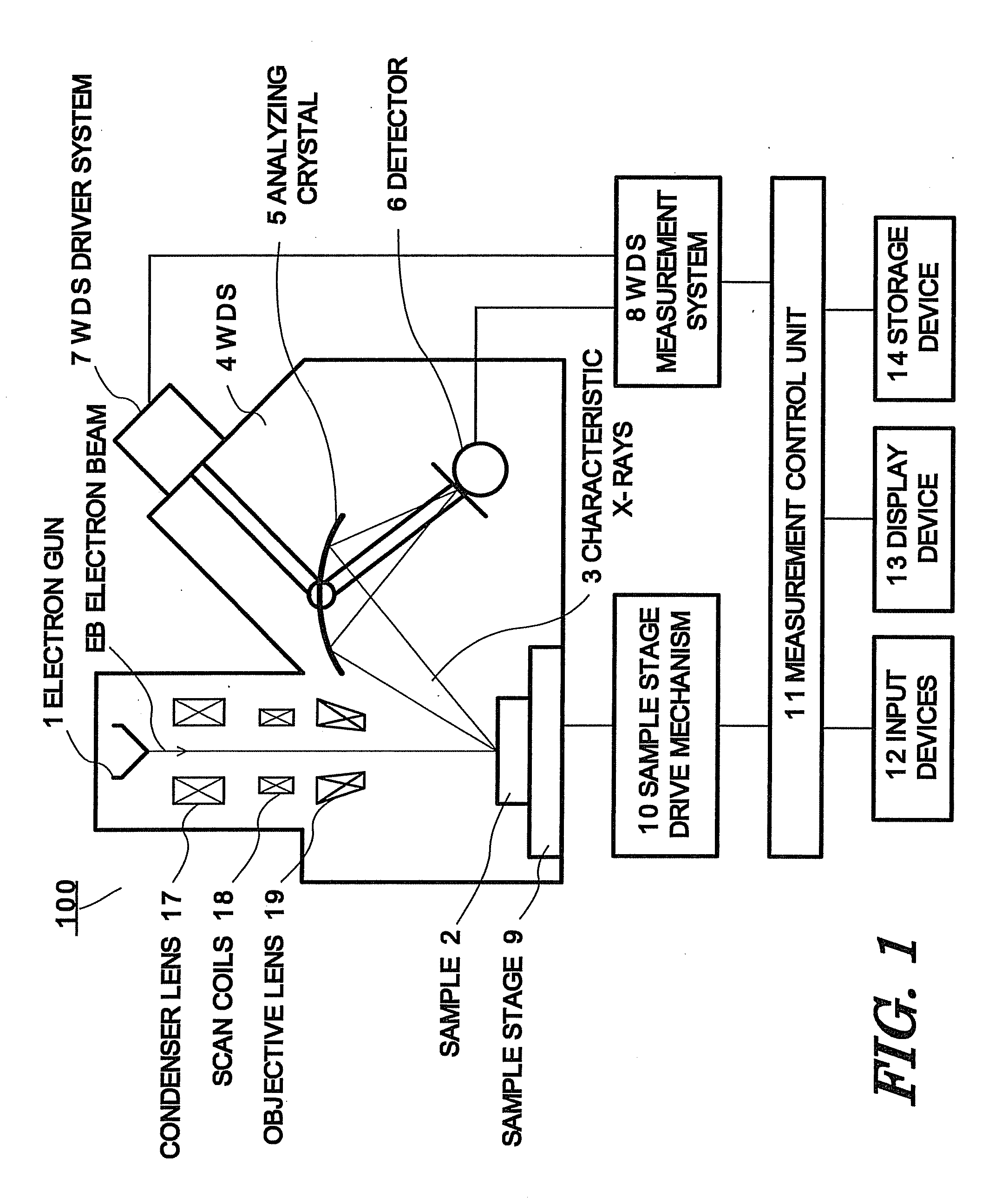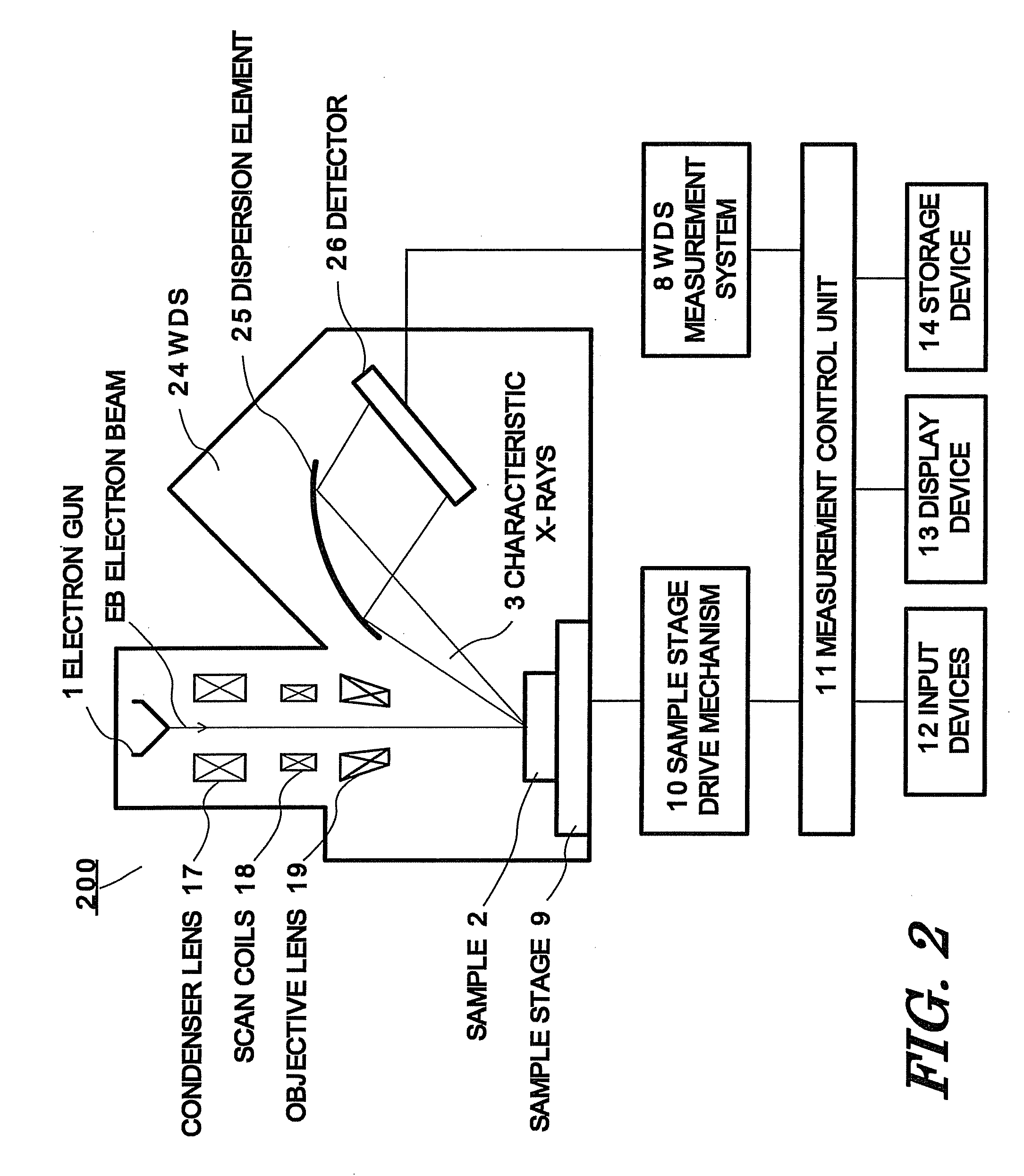Apparatus and Method for X-Ray Analysis of Chemical State
a technology of x-ray analysis and apparatus, applied in the direction of material analysis using wave/particle radiation, x/gamma/cosmic radiation measurement, instruments, etc., can solve the problem of reducing the diffraction angle of higher-order lines, and affecting the diffraction of x-ray spectra. the effect of higher-order lines
- Summary
- Abstract
- Description
- Claims
- Application Information
AI Technical Summary
Benefits of technology
Problems solved by technology
Method used
Image
Examples
Embodiment Construction
[0055]Embodiments of the present invention are hereinafter described with reference to the accompanying drawings. It is to be noted, however, that the technical scope of the invention is not limited thereby. In the various figures, those components operating identically or similarly are indicated by the same reference numerals and their repeated detailed description will be omitted.
[0056]FIG. 1 is a block diagram of an EPMA (electron probe microanalyzer), schematically showing one example of configuration for implementing the present invention. An electron gun 1 emitting an electron beam EB is incorporated in the EPMA, generally indicated by reference numeral 100. The beam EB is sharply focused by a condenser lens 17 and an objective lens 19 and made to hit a sample 2. Scan coils 18 scan the beam in two dimensions. Consequently, the beam position on the sample can be modified. Characteristic X-rays 3 emitting from the sample 2 are spectrally resolved and detected by a WDS (wavelengt...
PUM
| Property | Measurement | Unit |
|---|---|---|
| chemical state | aaaaa | aaaaa |
| wavelength- | aaaaa | aaaaa |
| wavelength | aaaaa | aaaaa |
Abstract
Description
Claims
Application Information
 Login to View More
Login to View More - R&D
- Intellectual Property
- Life Sciences
- Materials
- Tech Scout
- Unparalleled Data Quality
- Higher Quality Content
- 60% Fewer Hallucinations
Browse by: Latest US Patents, China's latest patents, Technical Efficacy Thesaurus, Application Domain, Technology Topic, Popular Technical Reports.
© 2025 PatSnap. All rights reserved.Legal|Privacy policy|Modern Slavery Act Transparency Statement|Sitemap|About US| Contact US: help@patsnap.com



